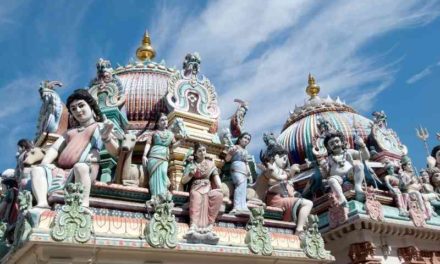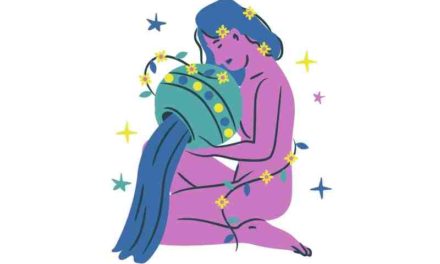Hindu Tantra origins have nonetheless been the subject of two quite different narratives proposed by scholars to account for the possibility of its origins. It is said that the Indus Valley civilization was the birthplace of “Tantrism.” This civilization was characterized by goddess worship, fertility ceremonies, and proto-yogic activities, and it was thought to have been a matriarchal society.
The Indus Valley civilization was destroyed by Aryan invading armies, and Tantrism is said to have been forced underground, where it lingered among tribal people on the fringe of Indian culture, as well as serving as the “autochthonous substratum” of later Hinduism.
After then, according to this interpretation, Tantrism reappears in literature from the middle centuries of the first millennium, but only as a Sanskritized, aristocratic manifestation of a continuing and essentially popular type of Indian religion, not as a new religion in itself.
According to a completely distinct story, Tantrism is a branch of Aryan or Vedic religion that developed independently. This viewpoint holds that Tantrism is essentially the product of the intellectual and theological elite, rather than being founded on a popular movement (let alone an “autochthonous substratum” within Hinduism) as some have claimed.
Researchers who hold this perspective point to the fact that the books in which the principles and practices of Tantrism are first contained were written in Sanskrit, not any common vernacular, as evidence of their stance.
In order to account for the origins of Tantrism, one can consider it to be a synthesis of both indigenous and Vedic roots, or it could be viewed as an amalgamation of various shamanic and magical practices (some of which may have originated in Central Asia) and the mystical speculations characteristic of the brahman elite, to name a few possibilities.
All efforts to trace the chronological and cultural roots of Tantrism remain theoretical and hypothetical in nature. Although less definite, the geographical roots of the Tantric movement that emerged in the middle centuries of the Common Era are also a source of uncertainty.
Many of India’s Tantric centers were situated in frontier or border regions (for example, Kashmir and Assam), but other equally significant geographical localities for Tantric expression include Andhra Pradesh, Kerala, Madhya Pradesh, and Orissa. There does not seem to be a single origin point for Tantrism, as there is for Buddhism.
According to the majority of researchers, Hindu Tantras were first practiced at least two or three centuries prior to 800 CE, although there is no solid proof that they were practiced in the era before then.
According to stone inscriptions, Tantric deities were worshipped in the fifth century, and most historians think that Tantrism was fully established by the sixth or seventh centuries CE, depending on who you ask.
The era from the eighth or ninth century to the fourteenth century seems to have been a time of great prosperity for Tantrism in India, despite the fact that there is no specific evidence to support this.
During this time period, the Tantras, Samhitas, and Gamas, as well as numerous temples and some of the most influential philosophers in the Tantric traditions, were written down and passed down through generations (e.g., Abhinavagupta).
The Tantric movement began to exert influence on all kinds of Hinduism as early as the medieval era and continued to do so throughout the ages. It has been observed that the Tantric deities constitute a significant portion of the Hindu pantheon in modern times. Tantrism also left its mark on Hinduism’s more “mainstream” practices, including temple construction, iconography, and rituals.
Indeed, as we have seen, some academics feel that Tantrism had such a profound impact on Hinduism that it may be considered “Tantric” throughout the whole period from medieval times to the present day. According to this viewpoint, mainstream Hinduism is more “Tantric” than not.
Although Tantrism has had a significant impact on Hinduism’s theology, arts, and iconography as well as its temples and rituals, most Hindus have not seen themselves as tantrikas in the past and would not consider themselves to be such now.
The esoteric character of most of the practice, along with the initiatory structure of many Tantric organizations, has ensured that the number of self-identified Tantric practitioners would always be restricted, despite the fact that “Tantric” impacts on Hinduism have been widespread.
As in the West, the secrecy and esotericism of many Tantric organizations have also contributed to the development of a negative reputation for Tantrism, both in India and in the West. Throughout most of contemporary India, the term has the same negative connotations that it has for so long had in the Western world.
According to Padoux, “Tantrism is fundamentally sectarian.” The main division of sect in Hinduism as a whole is comprised of those who worship Viu (Vaiavas), those who worship Siva ( saivites), and those who worship the Goddess, who worship her in one or more of her many forms as the supreme deity.
Although Tantric sects may be found within each of these major divisions, the Tantric groups found within the Saivite groupings consider Siva and Shakti to be inseparable and, as a result, are not easily distinguished from one another according to these sectarian categories.
There is also a lot of overlap between the labels Tantrism and Shaktism; although the groupings designated in these two ways are not identical, they do cross and overlap quite a bit, especially in the early stages.
While the Tantric movement had a significant impact on the Vaiavas, the Pcartra sect (whose beginnings date back to the sixth-century ce) was particularly affected by it, despite the fact that the majority of its adherents do not consider themselves to be Tantric practitioners today.
The Vaiava-Sahajiyas of Bengal, on the other hand, maintain a spiritual connection with other types of Tantrism. Viu is worshipped by the Sahajiyas, who were particularly prominent between the sixteenth and nineteenth centuries and who worship Vishnu in the guise of Krishnaa and his lover Radha.
Tantric poetry is filled with sensual imagery, and practitioners use devotional singing and dance in an attempt to produce a state of mystical ecstasy that they imagine to be the union of the deity and his consort.
The traditional manifestations of what is known as Tantrism, on the other hand, may be seen most prominently in various Aivite sects, particularly in the form of activities. Shaivite groups such as the Pupatas (dating back to perhaps the second-century CE) emphasized radical asceticism and bizarre or disreputable behavior (believed to be in imitation of the wild divine ascetic, iva) in the pursuit of supernatural powers or siddhis, and they were one of the earliest such groups.
In addition to the Kaplikas and the Kalmukhas, two early Saivite sects that had Tantric inclinations are known as the Klmukhas and the Kplikas, but nothing is known about them since no literature from these organizations has survived. Contemporary reporting about them, on the other hand, continues to emphasize their extravagant, scandalous conduct as well as their socially repulsive behaviors.
As their name implies, the Kplikas (“skull-bearers”) are believed to have utilized human skulls as begging bowls, were known to practice in graves on a regular basis, and may have participated in ritualized sexual practices. It seems that early Shaivite Tantrics practiced techniques that defied traditional morality and embraced controversial tactics in the service of power and liberation, but evidence for this is sparse at this point in time.
The Natha Siddhas (also known as the Kanphas, or “split-ears”) were a group of Saivite Tantric practitioners who belonged to a sect known as the Natha Siddhas (also known as the Natha Siddhas). They were also referred to as the Gorakhnthis, which was derived from the name of its founder, Gorakhnth or Goraka, who was credited with authorship of a large number of Tantric books from the hatha yoga school.
It was the same goal as for many other Tantrics: to achieve jivanmukta, the state of complete liberation in this lifetime, which was thought to be achievable through the distinctive practices of yoga, which included breath control and retention, as well as the “regression” of sexual energy and fluids.
The renowned philosopher of Kashmir’s “non-dual” Shaivism, Abhinavagupta (born about 950 CE), who is responsible for several intellectually profound and methodical Tantric treatises published in Sanskrit, deserves to be mentioned specifically. One of the most well-known of them is the Tantrloka (Elucidation of the Tantras), which is a commentary or exegesis on the Tantras written in Sanskrit.
Abhinavagupta’s exegesis of the esoteric rites of Tantric practice is one of the most important works on the subject “Many of its practices are transformed into a type of meditative asceticism with the goal of realizing a transcendent subjectivity after they have been sublimated, cosmeticized, and semanticized. This transformation occurs when the ritual is transformed from a form of “doing” to a kind of “speaking.
As a result, Hindu “Tantrism” has come to be regarded as referring to a certain kind of sect within Hinduism, according to some. The propensity to see it as an exceedingly prevalent, even universal, aspect of Indian religions, in general, has also emerged in recent years, according to some scholars.





